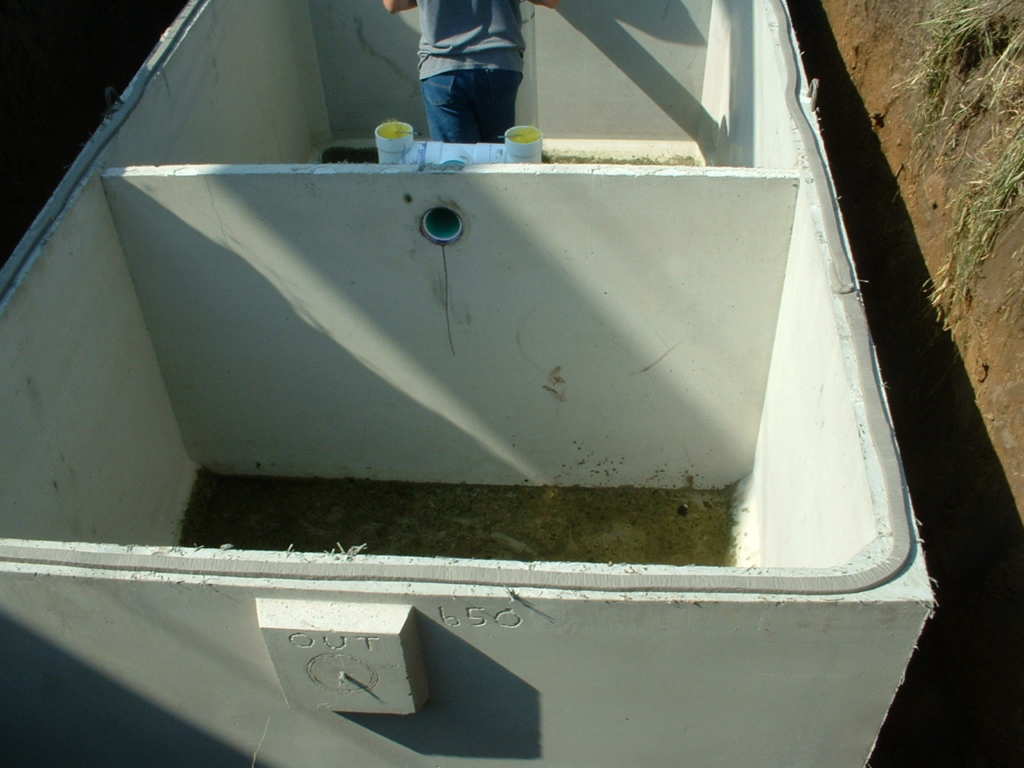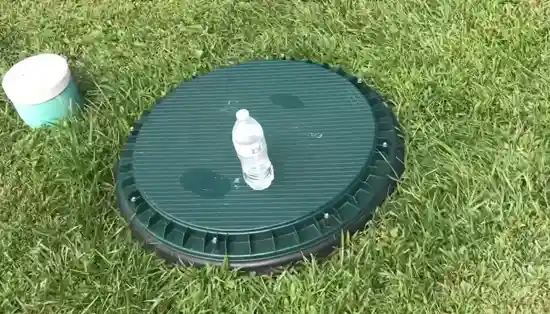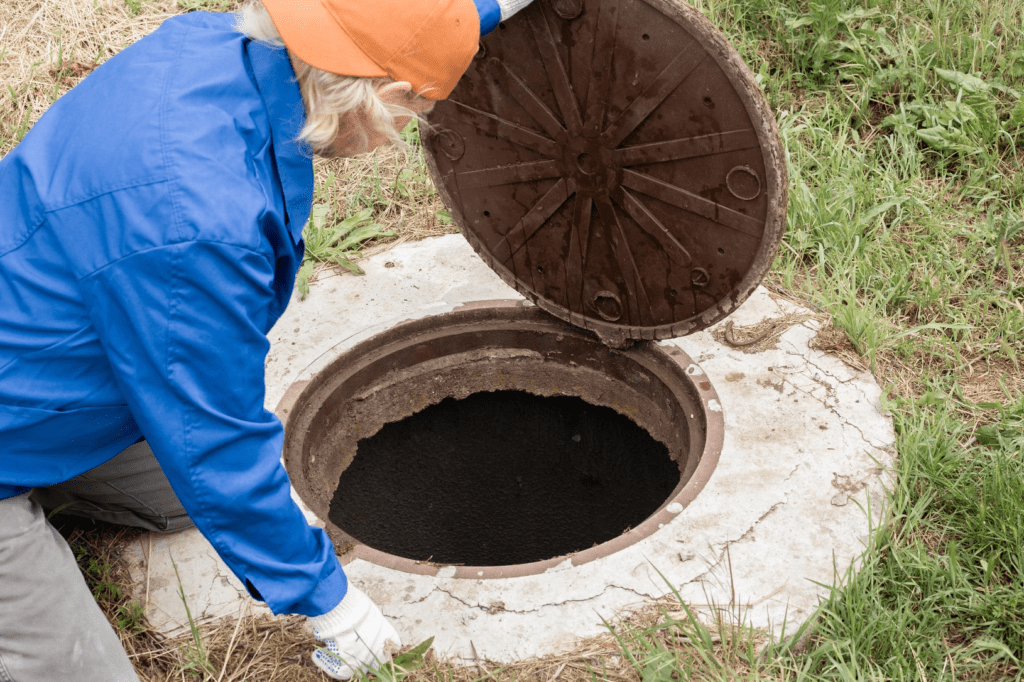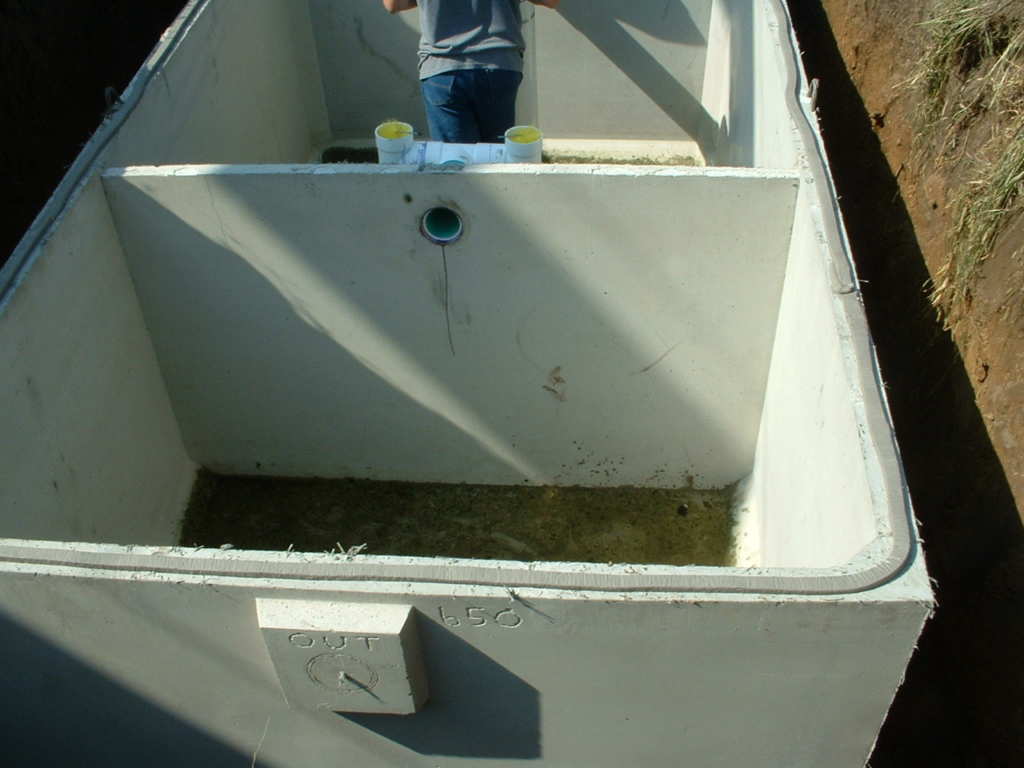In this article, you will discover the essential steps to effectively seal a concrete septic tank lid. Whether you’re a homeowner maintaining your septic system or a professional in the industry, ensuring a secure seal is crucial for preventing odor leaks and groundwater contamination. From selecting the right materials to applying a proper sealant, we will guide you through the process, empowering you to effectively protect your septic tank and the environment.

Understanding The Importance of a Well-Sealed Septic Tank Lid
The role of a concrete septic tank lid
A concrete septic tank lid serves as a crucial component in the overall functioning and maintenance of your septic system. Its primary role is to provide a secure cover for the tank, preventing unauthorized access and protecting it from external elements such as rainwater, debris, and pests. Additionally, the lid also helps to maintain the structural integrity of the tank by distributing weight evenly across its surface.
Why a properly sealed lid is crucial
A well-sealed lid is of utmost importance to ensure the optimal functioning of your septic system. It serves as a barrier that prevents odors and harmful gases from escaping the tank and infiltrating your home or property. A properly sealed lid also minimizes the risk of groundwater contamination, which can have severe environmental consequences. Moreover, maintaining a well-sealed lid helps to protect the overall integrity of the septic tank, preventing any potential structural damage or incurring costly repairs.
Dangers associated with improperly sealed lids
An improperly sealed lid can lead to a range of issues that can significantly impact the performance of your septic system. One of the most common dangers is the infiltration of rainwater, which can overwhelm the tank and disrupt the delicate balance of the microbial ecosystem responsible for breaking down waste. Additionally, a faulty seal can result in the release of unpleasant odors, posing a nuisance to you and your neighbors. Moreover, toxic gases like methane can escape through gaps or cracks in the lid, which poses health hazards to anyone in the vicinity.
Recognizing a Poorly Sealed Concrete Septic Tank Lid
Signs of a deteriorating lid
It is essential to be aware of the signs that indicate a poorly sealed concrete septic tank lid. Look out for any visible cracks or gaps in the lid, as these are clear indicators that the seal has deteriorated. Additionally, a lid that is no longer flush with the tank or has shifted position could suggest a problem with the seal. If you notice any pooling water or foul smells around the lid area, it is crucial to address the issue promptly as these can be signs of a poor seal.
Potential leaks and their implications
A poorly sealed concrete septic tank lid can lead to leaks, which can have significant implications. Leaks allow rainwater to enter the tank, causing the water level to rise and potentially overwhelm the system. This can result in a blockage, leading to sewage backups and potential damage to your property. Moreover, leaks can also lead to groundwater contamination, which poses risks to the environment and public health. Addressing leaks promptly is essential to avoid these potential issues.
Issues with tank ventilation
Proper ventilation is necessary for the efficient operation of a septic tank system. A poorly sealed lid can hamper the ventilation process, leading to the accumulation of gases inside the tank. These gases, such as hydrogen sulfide and methane, are hazardous and can pose health risks if released into the surrounding environment. A well-sealed lid ensures that the gases are contained within the tank and properly vented through the appropriate channels, ensuring the safety of your property and the well-being of those around.
Choosing the Right Materials for Sealing
Different types of sealants
When it comes to sealing a concrete septic tank lid, there are various types of sealants available on the market. The most common options include butyl rubber sealant, polyurethane sealant, and silicone sealant. Each has its own set of advantages and disadvantages, so it’s important to choose one that best suits your specific needs. Consider factors such as durability, flexibility, resistance to environmental factors, and ease of application when selecting the sealant for your septic tank lid.
Considering the lid material and structure
Before selecting a sealant, it is essential to consider the material and structure of your septic tank lid. Concrete lids require a sealant that can adhere well to their surface and provide a durable, long-lasting seal. On the other hand, if you have a lid made of plastic or fiberglass, you may need a different type of sealant specifically formulated for these materials. Consulting with a professional or manufacturer’s guidelines can help ensure you choose the right sealant for your specific lid.
Quality indicators for septic tank sealants
Not all sealants are created equal, so it’s important to choose a high-quality product that will effectively seal your septic tank lid. Look for sealants that are specifically designed for septic systems and have been tested and approved by regulatory bodies. Consider factors such as resistance to chemicals, temperature fluctuations, and UV exposure. Reading product reviews and comparing different brands can also give you a better understanding of the sealant’s quality and performance.
Safety Precautions Before Sealing
Protective gear and its importance
Before embarking on the sealing process, it is crucial to prioritize your safety by wearing the appropriate protective gear. This typically includes gloves, safety goggles, and a respirator or mask to protect against any potential exposure to toxic gases or harmful fumes. Investing in high-quality protective gear ensures that you are adequately shielded from any hazards during the sealing process.
Preventing accidental fall-ins
Working around a septic tank lid can be hazardous, as it is often located in an outdoor or underground area. To prevent accidental fall-ins, ensure that the lid is secure before beginning any sealing work. Use caution tape or barriers to cordon off the area and create a safe working environment. Additionally, practice proper ladder safety and ensure that you have a stable footing when accessing the lid.
Dealing with toxic gases
Septic tanks can produce and contain toxic gases such as hydrogen sulfide and methane, which can be dangerous if inhaled in high concentrations. Before sealing the lid, ensure that the tank is well-ventilated and that any lingering gases have dissipated. If you suspect that the gas levels are high or you are unsure, it is best to consult a professional to ensure your safety.
Preparation of Septic Tank Lid
Cleaning the lid
Before sealing the septic tank lid, it is essential to clean it thoroughly to remove any dirt, debris, or other loose particles. Use a mild detergent or septic-safe cleaning solution and a soft bristle brush to scrub the surface of the lid. Rinse it thoroughly with clean water and allow it to dry completely before proceeding with the sealing process. Cleaning the lid ensures better adhesion for the sealant and improves the overall effectiveness of the sealing job.
Checking for lid cracks and other physical damage
During the cleaning process, carefully inspect the lid for any cracks, chips, or other physical damage that may affect the seal. Even the smallest imperfections can lead to leaks or a compromised seal, so it is essential to address them before proceeding. If you encounter any damage, consult a professional to assess the extent of the issue and determine the best course of action for repair or replacement.
Ensuring a dry surface for better sealing
Before applying the sealant, it is crucial to ensure that the surface of the septic tank lid is completely dry. Moisture can hinder the effectiveness of the sealant and compromise its ability to form a strong bond with the lid. Wipe the lid down with a clean, dry cloth or allow it to air dry naturally before proceeding. An adequately dry surface will promote better adhesion and increase the longevity of the seal.
Applying the Sealant
Choosing the right application tools
The choice of application tools can significantly impact the effectiveness and ease of sealing your septic tank lid. Depending on the type of sealant you are using, common tools include a caulking gun, putty knife, or paintbrush. Consider the texture and viscosity of the sealant when selecting your tools to ensure smooth and even application. It is recommended to refer to the manufacturer’s instructions for specific guidelines on the most suitable application tools for your chosen sealant.
Following the manufacturer’s instructions
Every sealant has its own set of instructions and specifications for application. Adhering to the manufacturer’s guidelines is crucial to achieve effective and long-lasting sealing of your septic tank lid. These instructions typically include information on the recommended temperature range, curing time, and application technique. Take the time to thoroughly read and understand the instructions before proceeding to ensure the best possible results.
Ensuring an airtight seal
When applying the sealant, aim for an airtight seal to prevent any leaks or gas escapes in the future. Apply the sealant evenly across the entire perimeter of the lid, ensuring it fills any cracks or gaps. Use a smooth, continuous motion to achieve a consistent layer of sealant. Pay careful attention to corners and edges, as these areas are often more prone to leaks. Once the sealant has been applied, smooth the surface with a putty knife or other suitable tool to create a neat finish.

Curing the Sealant
Understanding the curing process
Curing refers to the time it takes for the sealant to dry and fully form a strong bond with the septic tank lid. The curing process varies depending on the type of sealant used and can range from a few hours to several days. It is important to understand the specific curing time for your chosen sealant, as prematurely subjecting it to stress or moisture can compromise its effectiveness. Avoid placing any weight or pressure on the lid until the sealant has fully cured.
Monitoring the weather
Weather conditions can influence the curing process and the overall effectiveness of the sealant. Extreme temperatures, high humidity, and rain can negatively impact the curing time and compromise the integrity of the seal. Before applying the sealant, ensure that the weather conditions are favorable and that you have enough time for the sealant to cure undisturbed. If the weather forecast predicts unfavorable conditions, consider postponing the sealing process to ensure optimal results.
Respecting the curing time
To ensure a durable and effective seal, it is crucial to respect the recommended curing time for the sealant. Rushing the process or using the lid before the sealant has fully cured can result in a compromised seal and potential leaks. Monitor the curing time closely and refrain from any activities that may disturb or compromise the seal until it is completely dry and cured.
Checking the Quality of Your Work
Inspecting lid for total coverage
Once the sealant has fully cured, it is important to inspect the lid to ensure total coverage and a secure seal. Carefully examine the edges, corners, and any potential trouble spots for any signs of gaps, cracks, or incomplete sealing. Use your hands or a flashlight to check for any areas that may require additional sealant or touch-ups. A thorough inspection at this stage ensures the quality and longevity of your sealing work.
How to check for leaks
To check for leaks, fill the septic tank with water and observe the lid for any signs of water escaping or seeping through. If you notice any leaks or water pooling around the lid area, it indicates a faulty seal and requires immediate attention. Promptly address any leaks to prevent further damage to your septic system and potential contamination of the surrounding environment.
Assessing the need for additional layers of sealant
After inspecting for total coverage and checking for leaks, you may find that certain areas require additional layers of sealant. Pay particular attention to any cracks, gaps, or uneven areas that may compromise the integrity of the seal. Apply additional sealant as needed, ensuring a smooth and even layer for optimal sealing. Regular assessments and touch-ups help to maintain the quality and effectiveness of the seal over time.

Maintaining the Seal
Regular inspection routines
To ensure the longevity and effectiveness of the sealed septic tank lid, it is important to incorporate regular inspection routines into your maintenance schedule. Check the seal periodically for any signs of wear, cracks, or deterioration. Keep an eye out for any changes in the lid’s position, as movement may indicate a compromised seal. Regular inspections allow you to address minor issues promptly before they escalate into more significant problems.
Addressing minor damages promptly
If you notice any minor damages during your inspections, such as hairline cracks or small gaps, it is essential to address them promptly. Fill the cracks or gaps with an appropriate sealant to restore the integrity of the seal. Even minor damages can lead to significant leaks or structural issues if left unattended, so taking immediate action is crucial in preserving the quality and long-term viability of the seal.
When to consider resealing
Over time, factors such as age, exposure to the elements, and normal wear and tear may necessitate resealing the septic tank lid. If you notice significant deterioration, persistent leaks, or a compromised seal, it may be time to consider resealing the lid. Consult a professional to assess the condition of the seal and determine the best course of action. Resealing ensures continued protection and performance of your septic system.
Hiring Professionals For The Job
Knowing when to seek professional help
While sealing a septic tank lid can often be a DIY project, some situations may require the expertise of professionals. If you are uncertain about the proper sealing techniques or encounter significant issues such as extensive damage, leaks, or compromised structural integrity, it is best to consult a professional. They have the knowledge, experience, and specialized equipment to handle complex septic tank lid sealing effectively and safely.
Choosing a reliable service provider
When selecting a service provider for sealing your septic tank lid, it is important to choose a reliable and reputable company. Look for professionals who are licensed, insured, and experienced in septic system maintenance and repairs. Consider reading customer reviews and asking for recommendations to ensure you select a provider known for their quality workmanship and customer satisfaction.
Cost considerations
The cost of hiring professionals for septic tank lid sealing can vary depending on factors such as the extent of the work and the company you choose. Get multiple quotes from trustworthy service providers and compare them to ensure you receive a fair and competitive price. Remember, it is important to prioritize quality over cost when it comes to sealing your septic tank lid, as a well-sealed lid ensures the longevity and reliability of your septic system.

